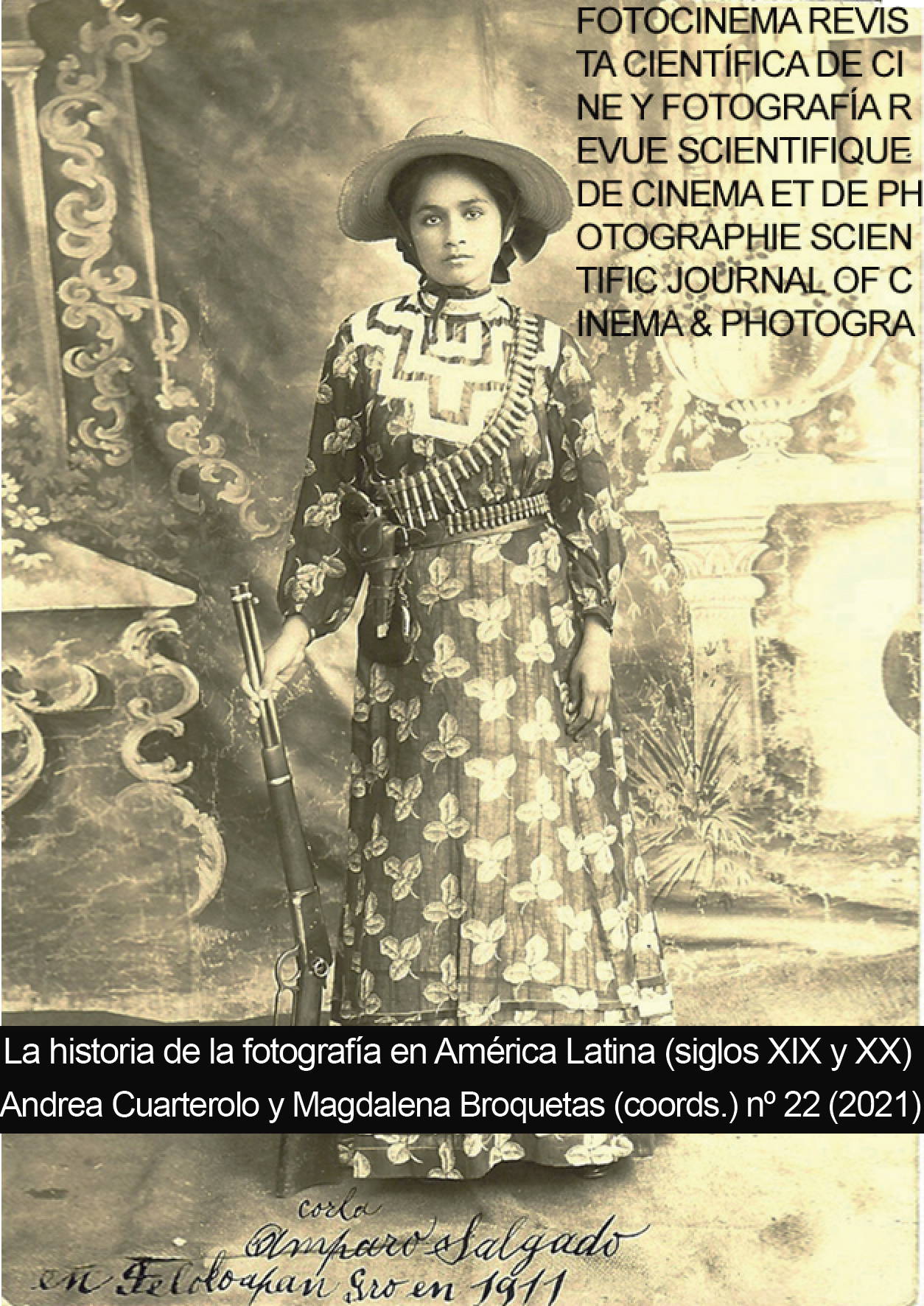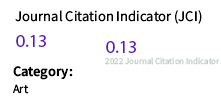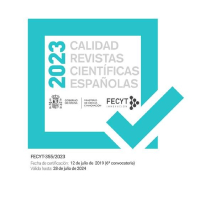Huella cinemática en las redes sociales: un análisis comparativo
DOI:
https://doi.org/10.24310/Fotocinema.2021.vi22.11738Palabras clave:
Marca, Redes sociales, Estudios de cine, YouTube, InteractividadResumen
El presente artículo tiene como objetivo analizar la actividad de los tres estudios de cine más grandes del mundo en las redes sociales: 20h Century Fox, Warner Bros y Universal Studios, y cómo este hecho está repercutiendo en el desarrollo de cada uno de ellos. A través de una búsqueda profunda, asesoramiento profesional y el uso de algunos programas estadísticos, se han han obtenido diversos hallazgos. Nos hemos centrado en diferentes partes de cada red social, ya que creemos que cada una de ellas está diseñada para cumplir un aspecto específico, por ejemplo, crear discusiones o simplemente presentar un trabajo o avance. Con ese enfoque, esperamos determinar cuál de las compañías ha entendido mejor la forma en que deben ser utilizadas las redes sociales y si han obtenido algún tipo de ventaja a través del buen uso de estos medios presentados como las herramientas con mayor interacción entre ellos y los espectadores. Concluimos una correlación entre el impacto de los estudios de cine y las redes sociales en términos de publicaciones y comentarios. YouTube es la principal red social para las compañías de estudios de cine.
Descargas
Métricas
Citas
Armes, R. (1994). Action and Image: dramatic structure in cinema. Manchester: Manchester University Press.
Basu, S., Kak, S., Krishen, P. (1981). Cinema and society: a search for meaning in a new genre. India International Centre Quarterly, 8(1), 57-76.
Brown, B. (2013). Cinematography: theory and practice: image making for cinematographers and directors. Milton Park: Routledge.
Çalli, L., Clark, L. (2015). Overcoming SME Barriers to Gaining Competitive Advantage Through Social Media. Proceedings of the 2nd European conference on social media ECSM 2015, Academic Conferences and Publishing International Limited, Reading UK.
Deltell, L., García Fernández, E. C. (2013). Film promotion in the digital universe. The end of the cinema exhibition in Spain. Historia y Comunicación Social, 18, 203-217.
Deltell, L., Claes, F., Osteso, J. M. (2013). “Twitter en las campañas comunicativas de películas cinematográficas”. El Profesional de la Información, 22(2), 128-134.
Deltell Escolar, L., Clemente Mediavilla, J. (2016). Productoras españolas en la red. Actividad en Twitter y Facebook. Estudios sobre el Mensaje Periodístico, 22(2), 969-980.
Denzin, N. K. (1991). Images of postmodern society: Social theory and contemporary cinema (Vol. 11). Newbury Park, California: Sage.
Dick, B. F. (1997). City of Dreams: the making and remaking of Universal Pictures. Kentucky: University Press of Kentucky.
Dolan, R., Conduit, J., Fahy, J., Goodman, S. (2016). Social media engagement behaviour: A uses and gratifications perspective. Journal of Strategic Marketing, 24(3-4), 261-277.
Duvall, J. A. (2017). The environmental documentary: Cinema activism in the 21st century. Bloomsbury: Bloomsbury Publishing.
Fondevila-Gascón, J. F., Del Olmo-Arriaga, J. L., Bravo Nieto, V. (2012). Digital presence and reputation in social media: comparative in the fashion industry. Fonseca, Journal of Communication, 5, 92-116.
Fondevila-Gascón, J. F., Beriain, A. (2013). Social Media Interactivity: A Case Study. The International Journal of Interdisciplinary Studies in Communication, 7(1), 45-61.
Fondevila-Gascón, J. F., Herrando-Soria, C., Beriain-Bañares, A., Del Olmo-Arriaga, J. L. (2013). Social media y comercio electrónico. Pinterest como nueva herramienta comunicacional. Doxa Comunicación. Revista Interdisciplinar de Comunicación y Ciencias Sociales, 16, 151-172.
Fondevila-Gascón, J. F. (2014). El uso de hipertexto, multimedia e interactividad en periodismo digital: propuesta metodológica de ranking de calidad. ZER, Revista de Estudios de Comunicación, 19(36), 55-76.
Fondevila-Gascón, J. F., Perelló-Sobrepere, M. (2014). The rise of Twitter in the Latin American landscape: a study of the most followed accounts in Brazil, Mexico, Argentina, Colombia and Venezuela. Revista Latinoamericana de Ciencias de la Comunicación, 10(19).
Fondevila-Gascón, J. F., Mir-Bernal, P., Muñoz-González, M., Berbel, G. (2016). Social media and tourism: case study in Catalonia. Revista Científica Hermes-FIPEN, 16, 115-131.
Fondevila-Gascón, J. F., Botey-López, J., Rom-Rodríguez, J. (2017). Formats emergents en televisió: anàlisi comparativa d’aplicacions publicitàries interactives en HBBTV. Comunicació: Revista de Recerca i d’Anàlisi [Societat Catalana de Comunicació], 34(1), 67-81.
Fondevila-Gascón, J. F., Mir-Bernal, P., Rom-Rodríguez, J., Santana-López, E. (2017a). “New Digital Metrics in Marketing: A Comparative Study on Social Media Use”. In Francisco Campos Freire, José Rúas Araújo, Valentín A. Martínez Fernández, Xosé López García (Eds.): Media and Metamedia Management, Colección Advances in Intelligent Systems and Computing, 503 (pp. 343-350). Berlin: Springer.
Fondevila-Gascón, J. F., Mir-Bernal, P., Muñoz-González, M., Gutiérrez-Aragón, Ó. (2017b). “A comparative research about social media use: the case of fast food restaurants”. Redes sociales y lo 2.0 y 3.0 (pp. 163-178). Madrid: Universidad Complutense de Madrid.
Fondevila-Gascón, J. F., Mir-Bernal, P., Rom-Rodríguez, J. (2018). Social media content value for a brand: study case. Questiones Publicitarias, 1(21), 21-26.
Fondevila-Gascón, J. F., Polo-López, M., Rom-Rodríguez, J., Mir-Bernal, P. (2020). Social Media Influence on Consumer Behavior: The Case of Mobile Telephony Manufacturers. Sustainability, 12(4), 1506.
Fondevila-Gascón, J. F., Gutiérrez-Aragón, Ó., Copeiro, M., Villalba-Palacín, V., Polo-López, M. (2020a). Influencia de las historias de Instagram en la atención y emoción según el género. Comunicar. Revista Científica de Comunicación y Educación, 63(2), 41-50.
Fondevila-Gascón, J. F., Vila, F., Rom-Rodríguez, J.; Perelló-Sobrepere, M. (2020b). Interactividad en la prensa online. Una comparativa en diarios regionales y de referencia en Cataluña. Estudios sobre el Mensaje Periodístico, 26(4), 1421-1431.
Goeldi, A. (2013). U.S. Patent No. 8,375,024. Washington, DC: U.S. Patent and Trademark Office.
Golan, G. J., Zaidner, L. (2008). Creative strategies in viral advertising: An application of Taylor’s six-segment message strategy wheel. Journal of Computer-Mediated Communication, 13(4), 959-972.
Jenkins, B. (2011). Consumer sharing of viral video advertisements: A look into message and creative strategy typologies and emotional content. Capstone Project, available at: www.american.edu/soc/communication/upload/blaise-jenkins.pdf (accessed September 3, 2020).
Klecker, C. (2013). Mind-tricking narratives: Between classical and art-cinema narration. Poetics Today, 34(1-2), 119-146.
Lombardi, F. (2013). Allan Dwan and the rise and decline of the Hollywood studios. Jefferson: McFarland.
Mazierska, E., Kristensen, L. (Eds.). (2015). Marxism and Film Activism: Screening Alternative Worlds. Oxford: Berghahn Books.
Nanda, M., Pattnaik, C., Lu, Q. S. (2018). Innovation in social media strategy for movie success. Management Decision, 56(1), 233-251.
Neira, E. (2015). La otra pantalla. Redes sociales, móviles y la nueva televisión. Barcelona, UOC.
Oh, C., Roumani, Y., Nwankpa, J. K., Hu, H. F. (2017). Beyond likes and tweets: Consumer engagement behavior and movie box office in social media. Information & Management, 54(1), 25-37.
Pardo, A. (2013). “Digital Hollywood: How Internet and Social media are changing the movie business”. In Handbook of Social Media Management (pp. 327-347). Springer, Berlin, Heidelberg.
Parmelee, J. H., Bichard, S. L. (2012). Politics and the Twitter revolution: How tweets influence the relationship between political leaders and the public. Lanham, MD: Lexington Books.
Perelló-Sobrepere, M. (2017). Building a New State from Outrage: The Case of Catalonia. In Handbook of Research on Citizen Engagement and Public Participation in the Era of New Media (pp. 344-359). IGI Global.
Perelló-Sobrepere, M. (2018). The Use of New Media and ICT by Social Movements in Contemporary Processes of Political Activism (Doctoral dissertation, Universitat Ramon Llull).
Perelló-Sobrepere, M. (2020). Brands with Purpose, the new driving force of Consumer Behavior. ON Research, Faculty Thoughts.
Preece, C, Kerrigan, F. O’reilly, D. (2018). License to Assemble: Theorizing Brand Longevity. Journal of Consumer Research, 46(2), 330-350.
Shirky, C. (2011). The political power of social media: Technology, the public sphere, and political change. Foreign affairs, 90(1), 28-41.
Solomon, A. (1988). Twentieth Century-Fox: A Corporate and Financial History (Vol. 20). Lanham: Scarecrow Press.
Sperling, C. W., Millner, C., Warner, J. (1998). Hollywood be thy name: The Warner Brothers story. Kentucky: University Press of Kentucky.
Terry, N., Butler, M., De’Armond, D. A. (2011). The determinants of domestic box office performance in the motion picture industry. Southwestern Economic Review, 32, 137-148.
Publicado
Cómo citar
Número
Sección
Licencia
Todos los contenidos publicados en Fotocinema. Revista científica de cine y fotografía están sujetos a la licencia Creative Commons Reconocimento-NoComercia-Compartirigual 4.0 cuyo texto completo puede consultar en <http://creativecommons.org/licenses/by-nc-sa/4.0>
Se pueden copiar, usar, difundir, transmitir y exponer públicamente, siempre que:
- Se cite la autoría y la fuente original de su publicación (revista, editorial y URL de la obra).
- No se usen para fines comerciales.
- Se mencione la existencia y especificaciones de esta licencia de uso.
Los derechos de autor son de dos clases: morales y patrimoniales. Los derechos morales son prerrogativas perpetuas, irrenunciables, intransferibles, inalienables, inembargables e imprescriptibles. De acuerdo con la legislación de derechos de autor, Fotocinema. Revista científica de cine y fotografía reconoce y respeta el derecho moral de los autores/as, así como la titularidad del derecho patrimonial, el cual será cedido a la Universidad de Málaga para su difusión en acceso abierto. Los derechos patrimoniales, se refieren a los beneficios que se obtienen por el uso o divulgación de las obras. Fotocinema. Revista científica de cine y fotografía se publica en open access y queda autorizada en exclusiva para realizar u autorizar por cualquier medio el uso, distribución, divulgación, reproducción, adaptación, traducción o transformación de la obra.
Es responsabilidad de los autores/as obtener los permisos necesarios de las imágenes que están sujetas a derechos de autor.










.png)

13.png)




